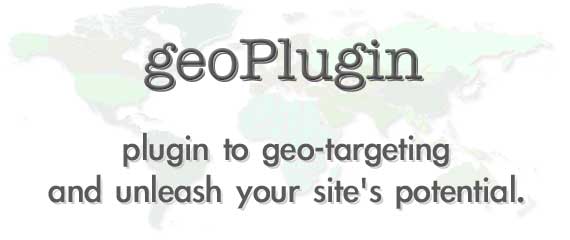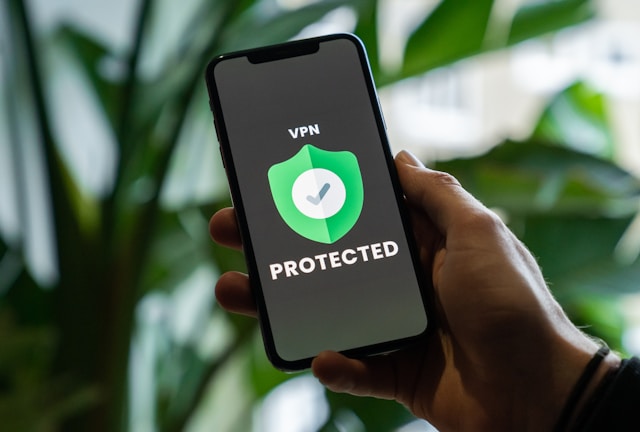Are you wondering, “What is a geofence?” or “What is geofencing?” It’s a cool technology that allows you to target customers based on their location in a defined area. This has many applications, such as driving traffic to your store or increasing attendees for your event.
In this article, we’ll explain what’s geofencing, how it works, and its implications for marketing. Read on to better decide whether you want to use it in your marketing strategies.

Table of Contents
How Do You Define Geofencing?
If you’re wondering what is geofencing, you can define geofencing by stating that it’s a location-based technology that utilizes GPS, RFID, Wi-Fi, or cellular data. You can use this to establish virtual boundaries (that’s what’s a geofence) around specific geographic areas.
You can also use these virtual parameters to trigger actions or notifications when a mobile device enters or exits the defined area.
As you’ll see further on, geofencing enables businesses and organizations to target, track, or interact with users. The technology has many use cases, such as personalized marketing, enhanced security, and asset tracking.
What Is Geofencing Used For?
Geofencing creates virtual boundaries for marketing to specific audiences, among other use cases. There are several excellent use cases for adding geofencing technology to your toolkit. Here are some of the top ideas for your consideration:
- Location-based marketing: Businesses use geo targeted ads to target consumers with relevant advertisements, promotions, or offers. This is based on their proximity to a physical location. For example, retailers can send personalized discounts to customers when they enter a store or nearby area.
- Retail analytics: Geofencing enables retailers to track foot traffic patterns, understand customer behavior, and analyze the effectiveness of marketing campaigns. This is possible by monitoring how customers move within and around stores. Also, retailers can optimize store layouts, staffing, and product placements to increase sales.
- Fleet management: You can use Geofencing in logistics and transportation industries to monitor and manage fleets of vehicles. Fleet managers can set virtual perimeters around specific locations or routes and receive alerts when vehicles enter or leave these areas. This helps optimize route planning, improve driver safety, and prevent unauthorized vehicle use.
- Asset tracking: Use geofencing to track and monitor valuable assets, equipment, or inventory within predefined boundaries. That means businesses can receive alerts if assets move outside designated areas.
- Event management: Use geofencing to enhance attendee experiences, streamline operations, and ensure safety. Event organizers can create virtual perimeters around event venues and send notifications, directions, or updates to attendees based on their location.

How Does Geofencing Work? Unpacking Its Elements
Are you wondering, “How does geofencing work?” In this section, we’ll reveal the different technical aspects of making geofencing function:
- Establishing virtual boundaries: Geofencing software allows users to define geographic boundaries on a map. You can specify the latitude and longitude coordinates or draw custom shapes around the desired area. These boundaries range from precise areas, such as stores or buildings, to larger regions.
- Tracking mobile devices: Geofencing relies on the GPS capabilities of mobile devices to determine their real-time location. GPS coordinates are continuously monitored when a mobile device enters or exits the predefined geofenced area. These coordinates are then compared with the predefined boundaries. Geofencing capabilities are, therefore, limited to active mobile phone users.
- Triggering notifications: When a mobile device crosses the geofence boundary, the geofencing software detects this event and triggers predefined notifications. These include sending push notifications, displaying targeted advertisements, logging entry/exit events, and activating smart devices.
- Utilizing location-based services: Geofencing can integrate with location-based services and applications on mobile devices to deliver personalized. For example, retail businesses can send promotional offers or discounts to customers when they enter a store. Furthermore, logistics companies can track the movement of vehicles along predefined routes.
- Monitoring and analysis: Geofencing software provides tools for monitoring and analyzing geofence activity. This includes entry/exit events, dwell times, and user interactions. Businesses can use this data to gain insights into customer behavior. Therefore, they can also optimize marketing campaigns and improve operational efficiency.

What Is Geofencing Marketing?
Geofencing marketing is a digital advertising strategy that takes advantage of geofencing technology to target consumers based on their location. This marketing strategy allows businesses to create virtual boundaries around specific geographic areas.
For example, you can do this when targeting a specific neighborhood or street.
When consumers enter or exit these areas with their mobile devices, you can serve them with targeted advertisements, promotions, or offers. Continue reading to learn three ways you can take advantage of location-based advertising.
1. Drive Foot Traffic
Businesses can use geofencing to attract customers to physical locations, such as retail stores, restaurants, or events. This is possible by offering location-specific promotions or discounts when users are nearby.
Furthermore, the strategy can incorporate customer information to send personalized offers. This reduces the chances of sending offers to people who are not interested in the store. Likewise, they can customize the marketing message to increase the conversion rate.

2. Improve Event Marketing
Event organizers can utilize geofencing to promote events and engage attendees. For example, they can send event reminders, directions, or exclusive offers. Here are some more tips when trying to improve your event marketing messages:
- Mobile optimization: Optimize your messaging for mobile devices. Many people access emails and notifications on their smartphones, so ensure your content is easy to read and interact with on smaller screens.
- Create urgency: Use language that creates a sense of urgency to encourage immediate action. For example, limited-time offers, early bird discounts, or exclusive perks for early registrants can motivate people to sign up quickly.
- Highlight benefits: Focus on the benefits of attending the event rather than just the features. This can include networking opportunities, educational sessions, or entertainment. Also, emphasize what attendees will get out of it.
- Clear and compelling messages: Ensure your message is clear, concise, and persuasive. Don’t forget to communicate what the event is about and why it’s valuable. This ensures that attendees better understand what they can gain from the time spent at the event.
- Follow-up: It’s good to follow up with attendees and prospects after the event to thank them for participating. This is a great opportunity to gather feedback and engage them with future events or offerings.

3. Analyze Location-Based Data
Geofencing marketing provides valuable insights into consumer behavior. You can use this information to develop your strategy for other marketing channels. That’s because the more data you have, the better your idea of what customers may need or want.
Furthermore, it helps if you can funnel the location-based data into a system and have algorithms analyze it. This level of automation can sort through large volumes of geolocation data and suggest how to best alter your marketing strategy.
What Is Geofencing Technology: An Overview
Now, let’s look at the top best practices when using geofencing technology. Therefore, when wondering what is geofencing technology, you can start with the strategies that empower you. Here are some best practices to consider:
- Choose the right geofencing tool: Select a reliable geofencing platform or software solution that meets your business needs. Look for features such as customizable geofence shapes and sizes, real-time tracking, and integration capabilities.
- Personalize messaging: Tailor your marketing messages or notifications to be relevant and valuable to users. Personalization increases engagement and improves the likelihood of conversion. Also, consider factors such as user preferences, behavior, and context when crafting messages.
- Optimize timing: Timing is crucial in geofencing campaigns. Therefore, consider the time, day of the week, and seasonality when scheduling messages. For example, sending lunchtime offers to users near restaurants during peak dining hours.
- Test and iterate: Continuously test and iterate your geofencing campaigns to optimize performance and drive better results over time. Make sure to experiment with different geofence locations, messaging strategies, and timing. This helps identify what resonates best with your audience.
- Stay compliant with regulations: Stay informed about laws and guidelines related to location-based marketing and data privacy. This includes the General Data Protection Regulation (GDPR) in Europe and the California Consumer Privacy Act (CCPA) in the U.S. Also, ensure compliance with relevant laws and regulations to protect user data and avoid legal issues.

Is Geofencing Technology Worth It?
Geofencing technology is a worthwhile investment if you know how to incorporate it into your marketing strategy. It can be a game-changer for some businesses and brands that can segment audiences based on location.
Now that you better understand what is geofencing, you can use it for yourself. However, you’ll need to find services that offer strong and intuitive geofencing features to help you start.
Do you want a powerful plugin that takes advantage of geofencing technology? Then, you can check out GeoPlugin.
It’s an IP geolocation and reverse IP geocoding technology that detects requests from your visitors and locates them worldwide. This is down to the city they are in, based on their IP address. Sign up today to check out GeoPlugin for yourself!













